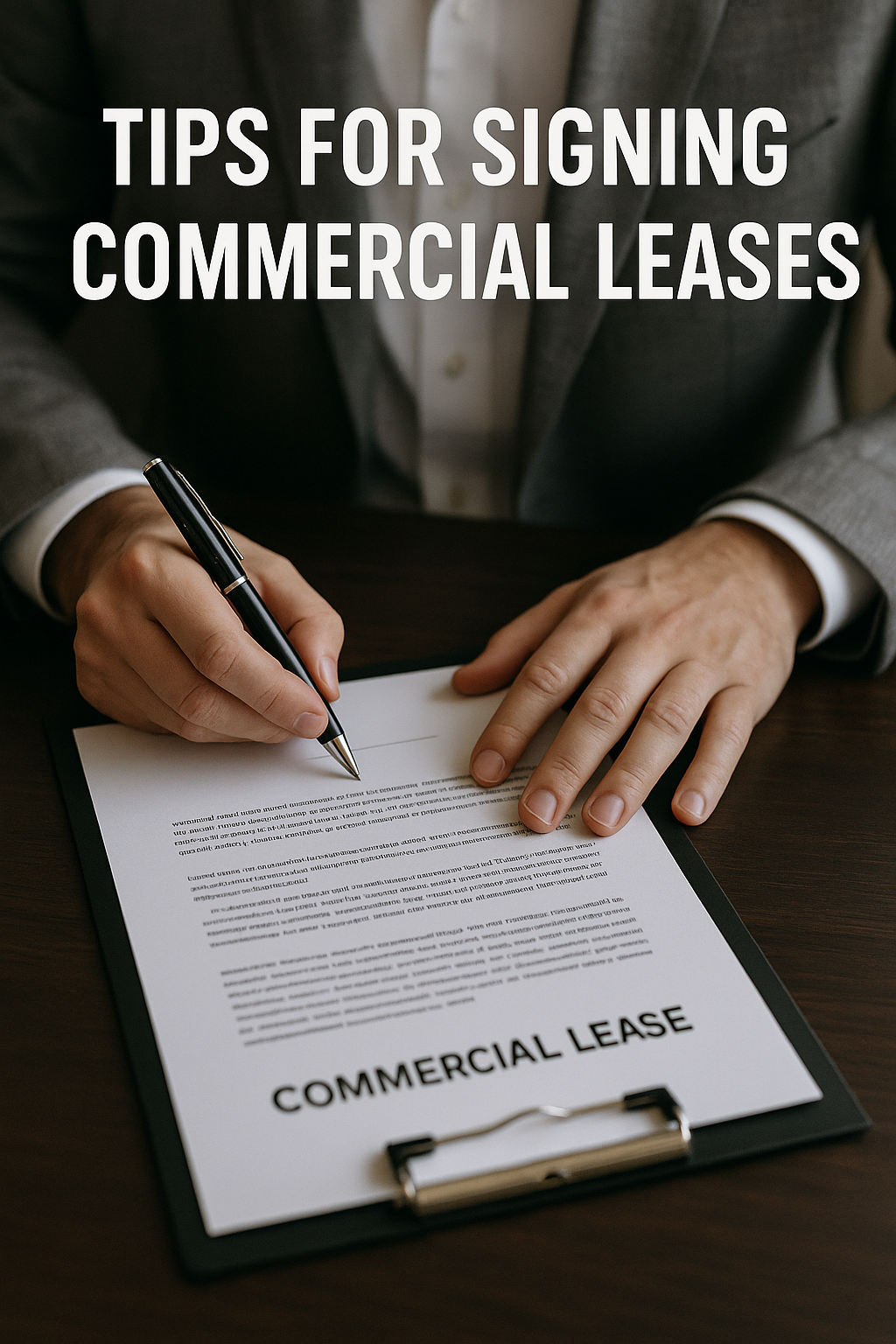Signing a commercial lease in Ontario is a significant step for your business, and it’s essential to ensure that the lease terms align with your needs and protect your interests.
Here are some important tips to keep in mind:
1. Understand the Lease Term
• Length of Lease: Commercial leases can vary in length, typically ranging from 1 to 10 years. Consider your business’s future plans when choosing the lease term. A shorter term might offer more flexibility, while a longer term may provide more stability but could lock you in if your business needs change.
• Renewal Options: Ensure you have clear renewal options if you intend to stay longer. Some leases may have automatic renewal clauses or require negotiation for extension.
2. Review Rent and Rent Increases
• Base Rent: Know exactly how much you will be paying as base rent. Commercial leases often state rent as a fixed amount, or sometimes as a percentage of sales (in retail leases).
• Additional Rent (Operating Costs): Make sure to understand what is included in the “additional rent,” such as property taxes, utilities, insurance, maintenance, and other operational costs (commonly referred to as “CAM” charges – Common Area Maintenance fees).
• Rent Increases: Find out how rent increases are calculated (e.g., fixed increases, inflation-linked increases, or based on market rent). Ensure that you are comfortable with the terms of these increases.
3. Understand the Lease Type
• Gross Lease: The landlord covers most or all of the property’s operating expenses.
• Net Lease: You, as the tenant, are responsible for some or all of the property’s operating costs (e.g., property taxes, insurance, maintenance).
• Percentage Lease: In retail leases, this may involve paying a percentage of your business’s revenue in addition to a base rent.
• Know what kind of lease you’re signing, and make sure the structure aligns with your business’s budget and cash flow.
4. Examine the Rent-Free Period and Incentives
• Many landlords offer a rent-free period at the beginning of the lease or other incentives (like tenant improvement allowances) to encourage tenants to sign. Make sure these benefits are clearly defined in the lease and that you understand any restrictions or conditions related to them.
5. Check the Maintenance Responsibilities
• Landlord vs. Tenant: Clarify who is responsible for maintaining the building and the space (e.g., HVAC systems, plumbing, structural elements). Often, landlords handle external maintenance, while tenants maintain the interior.
• Repairs and Alterations: Ensure the lease allows you the flexibility to make necessary alterations or improvements to the space for your business. You may need to get approval from the landlord for changes, so it’s important to understand the process.
6. Understand Exit Clauses and Termination Rights
• Review any termination clauses in the lease that could allow you to exit the lease early. This could include breaking the lease for specific reasons (e.g., financial hardship, business closure).
• Subletting or Assignment: Make sure the lease permits you to sublet or assign the lease to another party if your business changes or you need to vacate early. Some leases may limit your ability to do so, so negotiate flexibility if possible.
7. Understand Insurance Requirements
• Leases often require tenants to maintain certain insurance coverage (e.g., general liability, property insurance). Ensure you understand the specific types of coverage required and any minimum limits.
• You may also be responsible for covering insurance for the property’s common areas in some cases, so review this carefully.
8. Know the Use Clause
• Ensure the lease clearly specifies how you can use the space and that it aligns with your business operations. For example, some leases may restrict your ability to change the type of business conducted at the location (e.g., retail vs. office).
• Make sure that the exclusive use clause is in place if you want to prevent competitors from operating in the same building.
9. Understand the Parking and Access Rights
• Check if parking spaces are provided, and ensure they are sufficient for your business needs.
• Ensure there is adequate access to the premises, including entry points for deliveries or customer access, and that any shared common areas are clearly defined.
10. Seek Professional Legal Advice
• Commercial leases can be complex, and a lawyer experienced in commercial real estate can help ensure that the lease terms are fair, clearly defined, and protect your interests.
• A lawyer can also help you identify potential risks, such as unclear clauses or overly restrictive terms that could affect your business down the line.
11. Clarify the Landlord’s Responsibilities
• Understand the landlord’s duties, such as maintaining the structural integrity of the building and ensuring the premises are safe. You should also clarify who handles issues such as security, janitorial services, and repairs to common areas.
12. Negotiate Flexibility Where Possible
• Escalation Clauses: Negotiate rent escalation clauses (how and when rent can increase) to ensure they are fair and manageable.
• Exit Strategy: Negotiate a reasonable exit strategy if your business doesn’t succeed or if the space becomes unsuitable. Look for clauses that allow you to terminate the lease without heavy penalties in certain circumstances.
________________________________________
By carefully reviewing and negotiating the terms of your commercial lease, you’ll be able to protect your business and avoid potential legal and financial issues in the future. Be sure to involve professionals like lawyers and accountants to ensure the lease terms work well for your specific business needs and long-term goals.
Call Capulli Law today to help you with all of your commercial needs – whether its signing a lease or purchasing a property for your business, don’t make a move before calling us! Proudly serving Toronto and the Surrounding Area.
